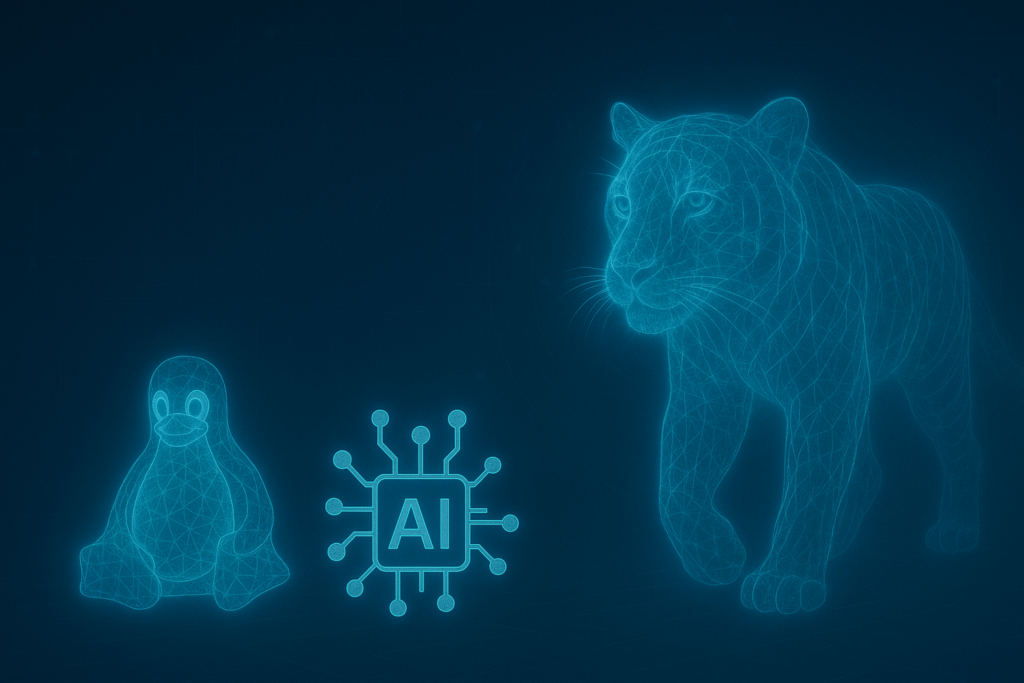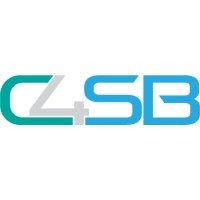The Semantic Tiger Team was launched, bringing together 39 industry leaders to align disparate ontology efforts, including Haystack, Brick, DBO, and others. Hosted under the Linux Foundation, this cross-industry initiative brings together the architects of major ontology standards.
Analysis by chatGPT of last Friday’s Semantic Tiger Team kickoff.
Who is C4SB?
Strategic Briefing: Accelerating Semantic Normalization in the Building Management Systems Industry
This updated briefing incorporates insights from the Semantic Tiger Team kickoff meeting (April 2025) and is intended for a broad industry audience, including vendors, systems integrators, building owners, and standards bodies. It aims to support industry-wide efforts to normalize semantic data models for smart buildings.
I. Challenges to Semantic Normalization in the BMS Industry
- Persistent Fragmentation of Semantic Models
- Standards like Project Haystack, Brick Schema, RealEstateCore (REC), ASHRAE 223P, Google Digital Buildings, and Quantum all define overlapping yet divergent vocabularies.
- As Gabe Fierro noted, the result is a landscape of “many disconnected digital models” that make cross-system integration labor-intensive and inconsistent.
- Lack of Clear Governance or Alignment Mechanism
- Each initiative operates within its own governance model. There is no current cross-project governance framework to ensure alignment or prevent duplication of effort.
- However, as highlighted by Erik Wallin and others, increasing collaboration (e.g. Brick + REC joint modeling) suggests the industry is ready for coordination.
- Adoption Barriers and Integration Costs
- Despite technical maturity, adoption remains uneven. Brian Frank emphasized the prohibitive cost of modelling systems from scratch, especially with field variability.
- Troy Harvey highlighted the machine-to-machine disconnect of current models when supporting autonomous systems.
- Divergence in Purpose and Audience
- Some ontologies serve human-readable semantic modelling (e.g. Haystack), others support machine inference (e.g. Quantum), and others focus on topological accuracy (e.g. ASHRAE 223p).
- This diversity is valuable but complicates convergence.
- Lack of Lifecycle and Portfolio-Level Modelling
- Kimon Onuma and Dennis Shelden noted that most existing models are project- or building-centric, not designed to support the needs of portfolio-wide asset management.
II. Opportunities Emerging from the Ecosystem
- Maturing Standards and Emerging Alignment
- Cross-project alignment efforts are gaining traction: Brick & REC announced modular integration, and Haystack is developing RDF exports.
- ASHRAE 223P aims to synthesize core semantics and topology. Joel Bender described it as a bridge between semantics and BACnet, enabling seamless plug-and-play functionality.
- Tooling, Open Source, and Cloud-Native Momentum
- Initiatives like Building Motif (NREL), Xeto (Haystack), CNS/CP (C4SB), and Quantum DSLS all aim to reduce deployment friction by codifying reusable templates and validation mechanisms.
- Cloud-native design patterns (e.g. Anto Budiardjo’s CNS/CP) enable semantic integration across silos using connection profiles and standard ETL flows.
- Foundation for Machine Reasoning and Autonomy
- Troy Harvey positioned Quantum as enabling autonomous systems by defining existential/physical ontologies rooted in behaviors and physics.
- This opens the door to computable, programmable ontologies that support simulation, control, inference, and learning.
- Growing Institutional Support and Public Sector Buy-In
- ASHRAE, NIST, DOE, and others are committing resources to semantic tooling, test harnesses, and public working groups.
- An active effort is to align semantic initiatives with smart city platforms and energy grid services.
- Market Readiness for Interoperability
- Speakers from across the session reinforced that the cost of bespoke integration is unsustainable. The market increasingly demands open, composable data systems. There is also a growing consensus that interoperability must extend not only within domains but across them—including the integration of ontologies from different domains (e.g. BIM, GIS, BMS, cybersecurity) to enable true cross-sector data flow and value realization.
- Cross-Domain Ontology Integration: From Buildings to Cities
- Contributors emphasized the need to link BMS ontologies with adjacent domains like BIM, GIS, facility management, and smart cities.
- Kimon Onuma described using “minimal geometry” and spatial scaffolding to relate building data to broader geospatial and portfolio-wide systems.
- Dennis Shelden discussed how evolving standards like IFC 5 and USD/Entity-Component-Systems provide bridges between BIM metadata and semantic graphs.
- Troy Harvey proposed grounding ontologies in universal physical principles to make them broadly computable across industrial domains, from HVAC to logistics.
- C4SB as an Ideal Vehicle for Convergence
- The Coalition for Smarter Buildings (C4SB) is a collaborative industry initiative now transitioning under the Linux Foundation. Its mission is to unlock the value, power, and potential of smarter buildings by promoting open standards, open technology, and open markets.
- C4SB maintains various projects, including CNS/CP (Connection Profiles), TxO (Total Cost of Operation benchmarking), the Interoperable Building Box (IBB), and Div2525 (a procurement template).
- As a vendor-neutral, open-source-oriented foundation, C4SB is uniquely positioned to host shared tooling, governance models, and ongoing convergence work for semantic normalization. As Jim Zemlin, Executive Director of the Linux Foundation, stated: “We can create technology in an agile way through technical leadership at the project level, but then across all the projects have a set of tools that create long-term sustainability for all of them collectively.” This underscores why a Linux Foundation-hosted initiative like C4SB is ideal for driving long-term, cross-sector interoperability in smart building systems.
III. Comparison of Key Semantic Initiatives
| Standard / Project | Primary Focus | Technology Stack | Strengths | Current Alignment |
|---|---|---|---|---|
| Brick Schema | Equipment, points, spatial hierarchy | RDF/OWL, SHACL | Rich relationships; semantic rigor | Joint modeling with REC; ties to 223P |
| Project Haystack | Tagging and labeling of points | Custom tag dictionary, Xeto (Haystack 5) | Simplicity and adoption; analytics-ready | RDF mapping in progress; 223P alignment planned |
| RealEstateCore | Business layer, buildings-as-APIs | OWL, SHACL; now BSD-licensed | API generation from ontology; Microsoft Azure support | Joint modeling with Brick |
| ASHRAE 223P | Standardized semantic model for BMS | RDF, SHACL | Detailed connection modeling; tied to BACnet | Actively referencing Haystack, Brick, REC |
| Quantum / PassiveLogic | Computable existential ontologies | Custom DSLs, GraphQL, GPU-backed graph execution | Autonomy-ready; formal logic foundation | Exploring USD alignment; not directly tied to RDF standards |
| IFC / BuildingSMART | BIM & architectural metadata | STEP/SPF, JSON, SHACL | Construction lifecycle modeling | SHACL integration in progress; RDF bridge prototypes |
| CNS/CP (C4SB) | Cross-silo data integration via named use cases | ETL pipelines, YAML schemas, JSON | Enables plug-and-play across diverse domains; cloud-native friendly | Bridges existing systems via standardized Connection Profiles |
IV. Strategic Recommendations for the Semantic Tiger Team
- Curate a Modular Semantic Stack
- Rather than enforce one ontology, STT should define a layered stack (e.g. topology layer, device layer, business layer) where different projects contribute strengths.
- Follow the Brick/REC model: modularize semantics to encourage reuse.
- Coordinate with ASHRAE 223P as an Anchor Standard
- Encourage tooling, validation, and profiles to map to/from 223P.
- Develop a position that 223P becomes the canonical basis for shared semantics.
- Accelerate Reference Implementations and Tooling
- Support NREL Building Motif, Xeto templates, CNS/CP profiles, and Quantum introspection kit as starting points for plug-and-play semantics.
- Promote tools that automate validation and transformation across models.
- Convene Alignment Roundtables and Working Groups
- Create structured venues (e.g. GitHub-based open alignments) to harmonize concepts across ontologies.
- Share ontology design decision records, versioning strategies, and mapping tools.
- Promote Buyer-Driven Procurement Standards
- Develop RFP language and education for building owners to request semantic interoperability by default, leveraging C4SB’s Div2525 project as a reference procurement framework for specifying open, interoperable, and semantically rich building systems.
- Leverage building owners’ demand to incentivize vendor compliance.
- Champion Cloud-Native and Edge-Native Interoperability
- Embrace connection profiles (CNS/CP) as a bridge strategy for legacy systems.
- Demonstrate how lightweight cloud-native semantics can unlock silo-to-silo integration today.
- Institutionalize Connection Profiles as a Cross-Silo Normalization Tool
- Connection Profiles (CNS/CP), as presented by Anto Budiardjo and Matt Hollar, offer a practical and lightweight way to create semantic bridges between systems.
- CPs enable standardized “use case channels” where data can be extracted, transformed, and published in a format predictable to a receiving domain—whether it’s energy, asset management, or cybersecurity.
- Rather than enforce top-down ontology unification, CPs facilitate bottom-up integration by allowing interoperability at the “interface level” across systems with different semantics.
- STT should support a repository of open-source CPs, advocate their inclusion in procurement and integration specifications, and position them as a near-term enabler of plug-and-play semantic flow.
The BMS industry is at an inflection point. Fragmentation and high integration costs have limited the promise of smart buildings for over a decade. The emergence of open semantic ontologies, driven by vendor collaboration and public-private partnerships, presents a clear opportunity for convergence.
The Semantic Tiger Team can catalyze this convergence by stitching together technical innovation, buyer demand, and standards alignment into a unified roadmap. The goal is not to pick one ontology, but to build the ecosystem scaffolding that allows many to interoperate fluidly.
The time to normalize is now.



